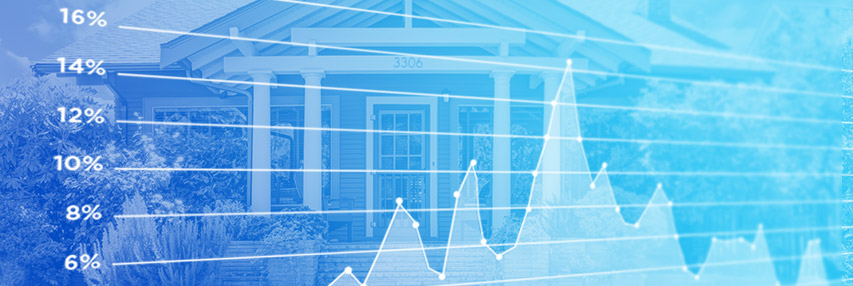What the Fed’s Latest Move Means for Mortgage Loans
The Fed made headlines this week when it announced it will raise its key interest rate for the first time in nearly a decade. While the initial increase is a marginal 0.25 percent, the Fed’s plan to steadily increase rates over the next few years clearly has implications for the broad economy – not to mention individuals like you and me.
Homeowners and prospective homebuyers in particular may be wondering what this news means for mortgage loan rates. Let’s take a look at four different types of mortgage borrowers and how they could be affected.
No impact: Homeowners with fixed mortgages
The beauty of a fixed-rate mortgage is that rising rates will have no effect on what you pay each month. If you have a mortgage with a fixed rate of 4 percent or lower, you can rest easy knowing that you’re enjoying the lowest mortgage rates in decades.
Some impact: Homeowners looking to refinance
Refinance rates aren’t directly tied to the Fed Funds rate, but a rising rate environment will certainly nudge refi rates higher over time. And if the Fed is correct in its forecasts, the cost of capital and short-term rates are only heading higher – and will likely drive up the cost of refinancing soon enough.
Essentially, interest rates aren’t going to get much better than they are today, so if you’ve been thinking of refinancing your mortgage, now is the time to make your move.
More impact: Prospective homebuyers financing with fixed mortgages
Since most mortgages are paid off or refinanced within 10 years, the 10-year Treasury yield is typically a good leading indicator for 30-year fixed mortgage rates. While the 10-year Treasury is primarily influenced by factors in the markets and the economy, it often follows the direction of short-term rates (which are likely going up). And, much like the considerations for refinancing, increased capital costs and a tighter lending environment are likely to gradually push rates higher over time, as well.
For prospective homebuyers, an increase in borrowing rates in the short term should only have a minor effect on monthly payments for new fixed mortgage loans. However, in this environment, acting sooner rather than later is your best bet for locking down the lowest rate possible.
Most impact: Existing/prospective adjustable rate mortgage (ARM) borrowers
Adjustable rate mortgages will be impacted most by rising rates, but the initial effects will likely be minor. Borrowers holding adjustable rate mortgages may not feel the increase in short term rates for months depending on their loan’s interest rate reset date. Even then, the first increase of .25 percent will likely only result in a marginal hike of the monthly mortgage payment. For example, on an ARM of $900,000, a bump of .25 percent would increase monthly payments by $122.
Likewise, prospective homebuyers contemplating an ARM probably won’t be impacted much in the short-term. While the rate increase could immediately raise base rates to a degree, many of the indices that serve as benchmarks for adjustable mortgages have already priced in an interest rate hike, so this initial increase should be muted.
However, prospective and existing ARM borrowers face the greatest risk over the next several years, when the Fed is forecasting a progression of interest rate hikes. The expectation is that the Fed Funds rate will rise to 1.375 percent by the end of 2016, 2.375 at the end of 2017 and 3.25 at the end of 2018.
If adjustable mortgage rates rise in kind during this period, the monthly payment on a $900,000 mortgage would increase by over $500 every year for the next 3 years. An additional risk exists with adjustable loans that include teaser rates. With these loans, the expiration of the period in which rates are held at artificially low levels can result in automatic interest rate increases of up to 2 percentage points. Between these two rate increases, the monthly payment on a $900,000 adjustable mortgage could increase by about $3,000 by the end of 2018.
The Takeaway
While the Fed’s initial rate hike probably won’t make big waves for mortgage borrowers in the near term, now’s a good time to take stock of your situation and decide whether changes should be made – before the series of rate increases that are expected to occur over the next few years. If you’ve been thinking of refinancing to lock in a lower and/or fixed rate, the opportunity is likely better today than it will be in the future.




Pingback: ADJUSTABLE RATE MORTGAGE (ARM) VS. FIXED RATE MORTGAGE: UNDERSTANDING HOME LOAN OPTIONS | youmortagage.us